
September 10, 1927 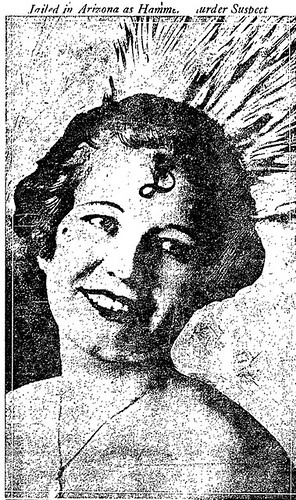
San Quentin
Infamous murderess Clara Phillips, aka “Tiger Girl”, has attempted suicide. She was found on the floor of her San Quentin prison cell bleeding profusely from self-inflicted wounds to her wrists. Clara is currently five years into a term of from ten years to life for the hammer slaying of a twenty year old widow, Mrs. Alberta Meadows. She considered the woman her “love rival” and lured her to an open field, where in a jealous rage she battered the woman to death in front of a witness.
Before committing murder at age 23, Clara had already led an extraordinary life. Married to Armour L. Phillips at age 14, she had been a chorus girl, Santa Monica bathing beauty, and briefly in the employ of the Eclipse Film Company.
Clara was known to be very jealous of her husband and they quarreled often – usually because she was accusing him of infidelity. When neighborhood gossip hinted at a love affair between Armour and the attractive young widow, Clara had a mission – remove her rival by any means necessary.
Fabricating a story of needing transportation to her sister’s house, Clara and her friend Peggy Caffee caught a ride with the unsuspecting Alberta. At some point during the drive Clara asked Alberta to pull over for a private conversation…moments later Peggy witnessed Clara viciously beating Alberta with a hammer, and then smashing her with a rock.
After bludgeoning and mutilating Mrs. Meadows, Clara went home and announced to her husband that she had killed the woman who was stealing his love. She then told him that she was going to cook him the best dinner he’d ever had because she was so happy.
Armour helped her to escape on the morning following the brutal crime. He then went to police and told them everything. Clara was arrested in Tucson, Arizona on a train bound for El Paso, Texas.
Clara’s defense team engaged five alienists (psychiatrists) who testified that the hammer wielding twenty-three year old woman had the mental capacity of an eight year old child, and that she was also susceptible to epileptic fits, which could account for her violent rages. Apparently epilepsy was a viable murder defense in 1922.
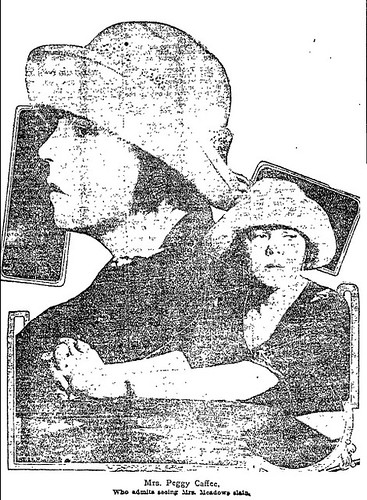 Clara gave her version of events from the witness stand. She said that it was her friend Peggy who had struck the fatal blow. The homicidal charmer had been at a loss to explain the bruising to her hands and the fingernail scratches covering her arms and legs – even so, public opinion began to sway in her favor.
Clara gave her version of events from the witness stand. She said that it was her friend Peggy who had struck the fatal blow. The homicidal charmer had been at a loss to explain the bruising to her hands and the fingernail scratches covering her arms and legs – even so, public opinion began to sway in her favor.
Evidently some of the jurors were convinced by her story because during their deliberations they became deadlocked. Most of the eight men voted for acquittal, three of the four women voted for hanging. The jurors reached a compromise decision, finding Clara guilty of second degree murder. Clara called her conviction an “unfair deal”.
On December 5, 1922 she escaped from the county jail by cutting the bars of her cell, hoisting herself to the roof of the building and then shimmying down a drainpipe. At least that was the story for publication. She was aided by a Mr. Jesse Carson whose motives for assisting her remain uncertain. Self-described adventurer and South American revolutionary, Carson was more likely to have been a cattle thief and small time grifter. In any case Clara and Jesse made their way to Mexico where she was reunited with her younger sister Etta Mae Jackson, and the threesome then headed off to Tegucigalpa, Honduras.
There were dozens of Tiger Girl sightings from Mexico to Wyoming. None of them panned out. After being on the loose for over four months, a tip that Clara was in Honduras led police to her hideout and she was finally arrested and returned to the U.S. She was taken directly to San Quentin and incarcerated.
Following her capture, she claimed that she had been the victim and that her so-called escape was actually a kidnapping. According to Clara, Carson had forced her to flee her cell at gun point. Carson was never held to answer for his part in Clara’s escape.
Ultimately she would serve twelve years in prison, losing some of her good time when it was revealed that she and a male convict were exchanging graphic love notes.
She filed for a divorce from Armour in 1938. She said she intended to remarry, but would not divulge the name of her husband-to-be. She moved to the east coast and vanished from public view.



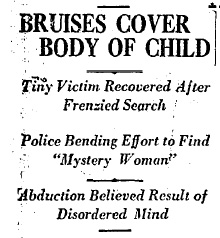
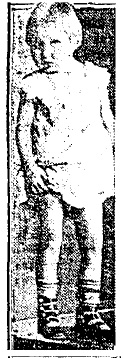 downtown shopping trip with her mother, Mrs. Agnes Wagner.
downtown shopping trip with her mother, Mrs. Agnes Wagner. 
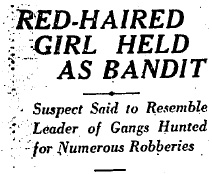


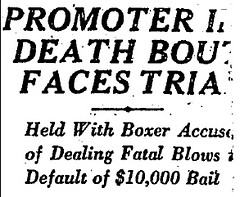

 The much anticipated rematch between defending heavyweight champion Gene Tunney, the “Fighting Marine”, and former champion Jack Dempsey, the “Manassa Mauler”, will be held at Solider Field in Chicago on September 26, 1927. Tunney will dominate for the first six rounds, but during the seventh round he will find himself in a corner being pummeled by a savage combination of punches that will drive him to the floor.
The much anticipated rematch between defending heavyweight champion Gene Tunney, the “Fighting Marine”, and former champion Jack Dempsey, the “Manassa Mauler”, will be held at Solider Field in Chicago on September 26, 1927. Tunney will dominate for the first six rounds, but during the seventh round he will find himself in a corner being pummeled by a savage combination of punches that will drive him to the floor. 






 Clara gave her version of events from the witness stand. She said that it was her friend Peggy who had struck the fatal blow. The homicidal charmer had been at a loss to explain the bruising to her hands and the fingernail scratches covering her arms and legs – even so, public opinion began to sway in her favor.
Clara gave her version of events from the witness stand. She said that it was her friend Peggy who had struck the fatal blow. The homicidal charmer had been at a loss to explain the bruising to her hands and the fingernail scratches covering her arms and legs – even so, public opinion began to sway in her favor. 
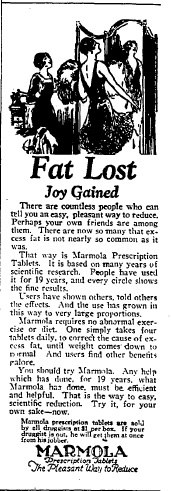
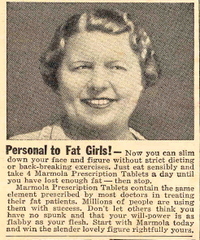 A young woman from Chicago came forward with a horror story that left courtroom watchers in tears. She told the judge that she had purchased Marmola because she was tired of her weight being the subject of cruel taunts by her classmates. Her excess pounds began to melt away, but she had also developed some nasty side effects. She hadn’t known that she was taking desiccated thyroid in toxic amounts. By the end of seven months she was vomiting regularly and her weight would eventually plummet to a cadaverous 50 pounds! At the time of the trial she was deathly ill with persistent symptoms of
A young woman from Chicago came forward with a horror story that left courtroom watchers in tears. She told the judge that she had purchased Marmola because she was tired of her weight being the subject of cruel taunts by her classmates. Her excess pounds began to melt away, but she had also developed some nasty side effects. She hadn’t known that she was taking desiccated thyroid in toxic amounts. By the end of seven months she was vomiting regularly and her weight would eventually plummet to a cadaverous 50 pounds! At the time of the trial she was deathly ill with persistent symptoms of 


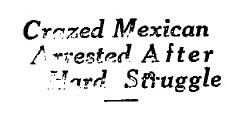

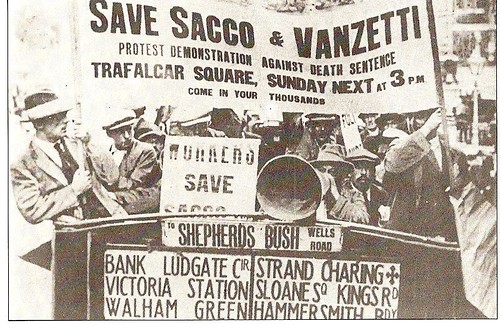 Whether or not the men were guilty of robbery and murder remains a topic for debate. What is certain is that their case was the culmination of the first so-called “Red Scare” which began amid the violence, chaos, and political unrest circling the globe during World War I.
Whether or not the men were guilty of robbery and murder remains a topic for debate. What is certain is that their case was the culmination of the first so-called “Red Scare” which began amid the violence, chaos, and political unrest circling the globe during World War I.